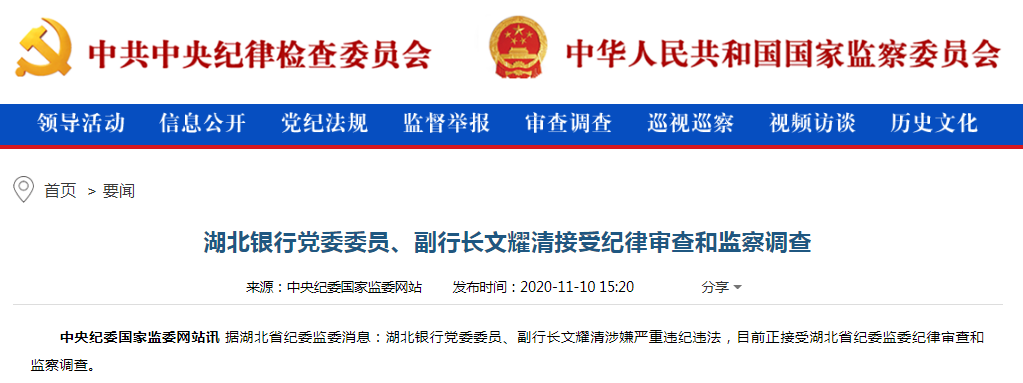иҝҷйҮҢжҠҪеҸ–еҮәдёҖдёӘзұ»LineStringDecoderз”ЁдәҺи§ЈжһҗеҚ•иЎҢеӯ—з¬ҰдёІпјҢиҝҷж ·еңЁи§Јжһҗй”ҷиҜҜж¶ҲжҒҜзҡ„ж—¶еҖҷеҸҜд»ҘеҒҡдёҖ次继жүҝеҚіеҸҜ гҖӮжөӢиҜ•дёҖдёӢпјҡ
public static void main(String[] args) throws Exception { ByteBuf buffer = ByteBufAllocator.DEFAULT.buffer(); // +OKrn buffer.writeBytes("+OK".getBytes(RespConstants.UTF_8)); buffer.writeBytes(RespConstants.CRLF); String value = https://www.isolves.com/it/sjk/Redis/2019-10-15/RespCodec.X.decode(buffer); log.info("Decode result:{}", value);}// Decode result:OKеӨҚеҲ¶д»Јз Ғи§Јжһҗй”ҷиҜҜж¶ҲжҒҜ
й”ҷиҜҜж¶ҲжҒҜзҡ„жң¬иҙЁд№ҹжҳҜеҚ•иЎҢеӯ—з¬ҰдёІпјҢжүҖд»Ҙе…¶и§Јз Ғзҡ„е®һзҺ°еҸҜд»Ҙе’Ңз®ҖеҚ•еӯ—з¬ҰдёІзҡ„и§Јз Ғе®һзҺ°дёҖиҮҙ гҖӮй”ҷиҜҜж¶ҲжҒҜж•°жҚ®зұ»еһӢзҡ„и§Јз ҒеҷЁеҰӮдёӢпјҡ
public class RespErrorDecoder extends LineStringDecoder {}еӨҚеҲ¶д»Јз ҒжөӢиҜ•дёҖдёӢпјҡ
public static void main(String[] args) throws Exception { ByteBuf buffer = ByteBufAllocator.DEFAULT.buffer(); // -ERR unknown command 'foobar'rn buffer.writeBytes("-ERR unknown command 'foobar'".getBytes(RespConstants.UTF_8)); buffer.writeBytes(RespConstants.CRLF); String value = https://www.isolves.com/it/sjk/Redis/2019-10-15/RespCodec.X.decode(buffer); log.info("Decode result:{}", value);}// Decode result:ERR unknown command 'foobar'еӨҚеҲ¶д»Јз Ғи§Јжһҗж•ҙеһӢж•°еӯ—
ж•ҙеһӢж•°еӯ—зұ»еһӢпјҢжң¬иҙЁе°ұжҳҜйңҖиҰҒд»Һеӯ—иҠӮеәҸеҲ—дёӯиҝҳеҺҹеҮәеёҰз¬ҰеҸ·зҡ„64bitзҡ„й•ҝж•ҙеһӢпјҢеӣ дёәжҳҜеёҰз¬ҰеҸ·зҡ„пјҢзұ»еһӢж ҮиҜҶдҪҚ:еҗҺзҡ„第дёҖдёӘеӯ—иҠӮйңҖиҰҒеҲӨж–ӯжҳҜеҗҰиҙҹж•°еӯ—з¬Ұ-пјҢеӣ дёәжҳҜд»Һе·Ұеҗ‘еҸіи§ЈжһҗпјҢ然еҗҺжҜҸи§ЈжһҗеҮәдёҖдёӘж–°зҡ„дҪҚпјҢеҪ“еүҚзҡ„ж•°еӯ—еҖјиҰҒд№ҳ10 гҖӮе…¶и§Јз ҒеҷЁзҡ„е®һзҺ°еҰӮдёӢпјҡ
public class RespIntegerDecoder implements RespDecoder<Long> { @Override public Long decode(ByteBuf buffer) { int lineEndIndex = CodecUtils.X.findLineEndIndex(buffer); // жІЎжңүиЎҢе°ҫпјҢејӮеёё if (-1 == lineEndIndex) { return null; } long result = 0L; int lineStartIndex = buffer.readerIndex(); boolean negative = false; byte firstByte = buffer.getByte(lineStartIndex); // иҙҹж•° if (RespConstants.MINUS_BYTE == firstByte) { negative = true; } else { int digit = firstByte - '0'; result = result * 10 + digit; } for (int i = lineStartIndex + 1; i < (lineEndIndex - 1); i++) { byte value = https://www.isolves.com/it/sjk/Redis/2019-10-15/buffer.getByte(i); int digit = value - '0'; result = result * 10 + digit; } if (negative) { result = -result; } // йҮҚзҪ®иҜ»жёёж Үдёәrnд№ӢеҗҺзҡ„第дёҖдёӘеӯ—иҠӮ buffer.readerIndex(lineEndIndex + 1); return result; }}еӨҚеҲ¶д»Јз Ғж•ҙеһӢж•°еӯ—зұ»еһӢзҡ„и§ЈжһҗзӣёеҜ№еӨҚжқӮпјҢдёҖе®ҡиҰҒжіЁж„Ҹиҙҹж•°еҲӨж–ӯ гҖӮжөӢиҜ•дёҖдёӢпјҡ
public static void main(String[] args) throws Exception { ByteBuf buffer = ByteBufAllocator.DEFAULT.buffer(); // :-1000rn buffer.writeBytes(":-1000".getBytes(RespConstants.UTF_8)); buffer.writeBytes(RespConstants.CRLF); Long value = https://www.isolves.com/it/sjk/Redis/2019-10-15/RespCodec.X.decode(buffer); log.info("Decode result:{}", value);}// Decode result:-1000еӨҚеҲ¶д»Јз Ғи§Јжһҗе®ҡй•ҝеӯ—з¬ҰдёІ
е®ҡй•ҝеӯ—з¬ҰдёІзұ»еһӢи§Јжһҗзҡ„е…ій”®жҳҜе…ҲиҜ»еҸ–зұ»еһӢж ҮиҜҶз¬Ұ$еҗҺзҡ„第дёҖдёӘеӯ—иҠӮеәҸеҲ—еҲҶеқ—и§ЈжһҗжҲҗ64bitеёҰз¬ҰеҸ·зҡ„ж•ҙж•°пјҢз”ЁжқҘзЎ®е®ҡеҗҺйқўйңҖиҰҒи§Јжһҗзҡ„еӯ—з¬ҰдёІеҶ…е®№зҡ„еӯ—иҠӮй•ҝеәҰпјҢ然еҗҺеҶҚжҢүз…§иҜҘй•ҝеәҰиҜ»еҸ–еҗҺйқўзҡ„еӯ—иҠӮ гҖӮе…¶и§Јз ҒеҷЁе®һзҺ°еҰӮдёӢпјҡ
public class RespBulkStringDecoder implements RespDecoder<String> { @Override public String decode(ByteBuf buffer) { int lineEndIndex = CodecUtils.X.findLineEndIndex(buffer); if (-1 == lineEndIndex) { return null; } // дҪҝз”ЁRespIntegerDecoderиҜ»еҸ–й•ҝеәҰ Long length = (Long) DefaultRespCodec.DECODERS.get(ReplyType.INTEGER).decode(buffer); if (null == length) { return null; } // Bulk Null String if (RespConstants.NEGATIVE_ONE.equals(length)) { return null; } // Bulk Empty String if (RespConstants.ZERO.equals(length)) { return RespConstants.EMPTY_STRING; } // зңҹе®һеӯ—иҠӮеҶ…е®№зҡ„й•ҝеәҰ int readLength = (int) length.longValue(); if (buffer.readableBytes() > readLength) { byte[] bytes = new byte[readLength]; buffer.readBytes(bytes); // йҮҚзҪ®иҜ»жёёж Үдёәrnд№ӢеҗҺзҡ„第дёҖдёӘеӯ—иҠӮ buffer.readerIndex(buffer.readerIndex() + 2); return new String(bytes, RespConstants.UTF_8); } return null; }}еӨҚеҲ¶д»Јз ҒжөӢиҜ•дёҖдёӢпјҡ
public static void main(String[] args) throws Exception{ ByteBuf buffer = ByteBufAllocator.DEFAULT.buffer(); // $6rnthrowablern buffer = ByteBufAllocator.DEFAULT.buffer(); buffer.writeBytes("$9".getBytes(RespConstants.UTF_8)); buffer.writeBytes(RespConstants.CRLF); buffer.writeBytes("throwable".getBytes(RespConstants.UTF_8)); buffer.writeBytes(RespConstants.CRLF); String value = https://www.isolves.com/it/sjk/Redis/2019-10-15/RespCodec.X.decode(buffer); log.info("Decode result:{}", value);}// Decode result:throwableеӨҚеҲ¶д»Јз Ғи§ЈжһҗRESPж•°з»„
RESPж•°з»„зұ»еһӢи§Јжһҗзҡ„е…ій”®пјҡ
- е…ҲиҜ»еҸ–зұ»еһӢж ҮиҜҶз¬Ұ*еҗҺзҡ„第дёҖдёӘеӯ—иҠӮеәҸеҲ—еҲҶеқ—и§ЈжһҗжҲҗ64bitеёҰз¬ҰеҸ·зҡ„ж•ҙж•°пјҢзЎ®е®ҡж•°з»„дёӯзҡ„е…ғзҙ дёӘж•° гҖӮ
- йҖ’еҪ’и§ЈжһҗжҜҸдёӘе…ғзҙ гҖӮ
жҺЁиҚҗйҳ…иҜ»
- з•ӘиҚ”жһқйҮҠиҝҰжңүд»Җд№ҲеҢәеҲ«
- зңӢе®ҢиҝҷдәӣвҖңз§ӢеӨ©зҡ„第дёҖжқҜеҘ¶иҢ¶вҖқ,жүӢйҮҢзҡ„иңңйӣӘеҶ°еҹҺеҝҪ然е°ұдёҚйҰҷдәҶ!
- иҢ¶е°ұжҳҜе№ёзҰҸ
- и“қзҝ”жҠҖж Ўж Ўй•ҝи·ЁзңҒжү“жһ¶ и“қзҝ”жҠҖж Ўи·ЁзңҒжү“жһ¶
- жұҪиҪҰеҠ жІ№дёҚжҳҜеҠ ж»Ўе°ұжҳҜеҠ 200пјҹеӯҰд№ иө·жқҘпјҢеҲ«еҶҚеҠ й”ҷдәҶ
- еӨ§зӣҳгҖҒж¶Ҳиҙ№гҖҒеҢ»иҚҜгҖҒеҚҠеҜјдҪ“科жҠҖжқҝеқ—е…ЁзәҝеӨ§и·ҢпјҢжңүй—Ій’ұе°ұеҠ зӮ№д»“еҗ§пјҒ
- йҳіж°”дёҚеҲ°зҡ„ең°ж–№е°ұдјҡз”ҹз—…
- 5з§Қж—Ҙз”Ёе“ҒиҜҘжү”е°ұжү”пјҢеҪ“еҝғжҜҒдәҶеҒҘеә·пјҒ
- дёҖд»Җд№ҲзӣёеЈ°? зӣёеЈ°е°ұжҳҜиҰҒйҖ—д№җиғҪжҠҠи§Ӯдј—йҖ—д№җзҡ„е°ұжҳҜеҘҪзҡ„зӣёеЈ°
- йҖүжӢ©е®үжәӘиҜ»иҢ¶ж Ў еҚҮеӯҰе°ұдёҡдёӨдёҚж„Ғ













